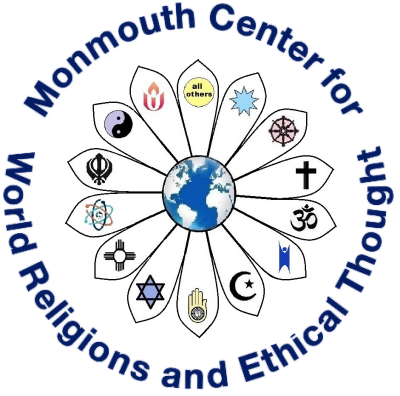Glimpsing a deep mystery, an inner journey begins.
The ancient path begins on top of a huge boulder in Seoul, Korea.
THE HERMIT KINGDOM
The year is 1971 and I am a young visiting professor at Kyunghee University. Today I have taken a crowded bus through the noisy streets of Seoul to sit on an enormous rock. Koreans revere and respect these ancient boulders – places where Buddhist temples and monks’ huts have traditionally been built. These gigantic rocks provide a still mountain presence to this frenetic ancient capital of the “Hermit Kingdom”.
.
Buddhism has a long and deep 1700 year history in Korea. By 372 CE, a wave of Buddhist monks flowed to Korea from China. Some two hundred years later they brought The Empty Gate to Japan. After 700 CE, Buddhism flourished in Korea and was adopted as the state religion. Today there are eleven million followers and 9,231 temples. (1) The Buddhist and Confucian principles of harmony and interconnectedness remain enshrined in the I-Ching hexagram on the South Korean flag.

Here, on top of a massive boulder, a traditional Buddhist temple has been beautifully erected. Jeong-gak-won Temple, built in 1617, is a gracious red wooden structure.
During Seoul’s sweltering summers, much like those of Washington DC, the large temple doors swing wide open to catch the summertime breezes. Guardian monkey statues and clanging temple bells dangle from the outstretched eaves of the massive curving tile roof.
This is the story of a quest into the profound mystery of silence.
TWO GUIDES
A lot happens in Seoul.
In this ancient capital city, I find two guides, a professor of philosophy and a Zen Master. They lead me to the profound mystery of silence. The quest begins
On the tatami-covered floor of the temple, twenty grey-robed monks and I sit cross-legged on zafus – the traditional circular black cushions that are home base for Zen practitioners. It is here, in this quiet temple, that I meet my first guide, a kindly Zen Master. It is the first step on a long and unexpected path. A silent experience in this temple space will change the course of my life.
There will be much more to say about this experience and the Zen Master in later chapters. But first, let me introduce the professor. He is an expert in comparative philosophy at my Korean university. He earned his Ph. D. in Belgium and is an authority on Western and Eastern ways of thinking. Professor Nam Key Young wears a jaunty blue beret over his boyish flop of hair.
Professor Nam often brings me to busy monasteries, as well as remote temples and shrines tucked into craggy cliffs and narrow valleys. The monks in rough grey robes always welcome him as a respected friend. Since the heads of all monks are shaven, I am surprisingly disconcerted by not knowing whether I am talking to a man or woman. Cairns, the piles of stones positioned on the temple grounds, are connections to San-shin, the Mountain Spirit of Korea’s shamanic past.
Professor Nam often invites me to sit in his book strewn office back at the university. With delight and total concentration, he performs the gracious ceremony of serving tea to me and our colleagues.
Professor Nam provides a rare inside look at how a Buddhist life can be lived in such an overwhelmingly populous urban setting. His apartment is on an upper floor in one of Seoul’s ubiquitous high rise apartment buildings. Sheets of white rice paper hang from the walls, some still damp from his calligraphy practice. He lives like a monk, honoring both the Jesuit and Buddhist traditions. In the highly Confucian society of Korea, he is a refined yangban literati or, if he chooses, an anti-establishment Buddhist or Taoist hermit.
One steamy June day, thick with impending rain, he leads me through a labyrinth of back alleys in the old Insadong section of Seoul. The shopkeeper and assistants bow as we enter the quaint antique shop squeezed between others along a narrow stone walkway. The hands of the aged antique dealer tremble as he unlatches the old wooden display case. Professor Nam points out two intriguing objects – a pair of light-complexioned stones.

The stones fit solidly into my palms and feel very heavy for their size. When I instinctively bobble them up and down, they feel identical in weight. Their smooth soft surfaces seem to faintly glow in the dimness of the shop. Strange markings completely cover the surfaces of the stones but offer no clues about their meaning.
.
Professor Nam sees my puzzled look, hesitates, and in his halting English, heavily accented with the delicate sounds of French and the throaty tones of Korean, he says slowly “You wirl SEE … you wirl recog’NIZE.”
What will I recognize? What was the code in these stones? I had no idea they would eventually unveil a great mystery. The stones would become part of my life in ways I would never imagine.
“You wirl SEE… you wirl recog’NIZE.”

SUGGESTIONS FOR PRACTICE
- Write about an object that contains a mystery to you.
(1) British Broadcasting Corporation, “Korean Zen”. http://www.bbc.co.uk/religion/religions/buddhism/subdivisions/koreanzen.shtml,
accessed 9/1/2015.
.

You must be logged in to post a comment.